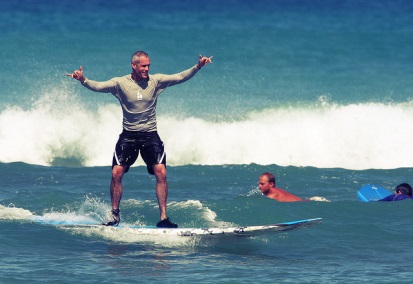Surfing is an amazing water sport involving incredible skill and coordination, and can best be learnt by practice. It is a water sport involving a very few, but precise elements. The first of these elements is a surfing beach, or a beach with the correct wave structure and currents pliable for surfing. Many of the most famous surfing beaches include the coast of California, Hawaii, Japan, the Maui Islands, Rio de Janeiro, Australia, Costa Rica, and many others. Surfing beaches are more common along the Pacific and Indian Oceans as opposed to the Atlantic Ocean due to adverse weather conditions. There are now even artificial surfing beaches or artificial reefs constructed in the ocean to attract tourism to an area.
The next element needed to surf correctly is a surfboard. These are elongated platforms made from a variety of medium to lightweight materials used to ride on the surfing beaches rapidly moving surfs. These began in Hawaii as “papa he‘e nalu” or surfboards made from local wood such as koa trees and were as much as 15 ft. (5 m) long. Modern surfboards are made from polyurethane or polystyrene and a finish of fiber glass, cloth and polyester or epoxy resin.
The rest of what is needed is nothing more than a swimsuit and skill and practices. Even having the perfect surfing beaches and surfboards available doesn’t mean one can ride the waves well. To gain skill, you will need to go to the surfing beaches and practice.
Learning can be done from taking courses, working with professionals, and watching videos of how to perform tricks and moves online or from a DVD. A mixture of various means of mental learning is essential, but the most important element to learning surfing will not be the knowledge you have in your head, but the time you spend mastering the waves and practicing your surfing techniques.
Photo Credit:Colin Davis
Login to
Don't have an account?
Access Free
Access Free




